Does 3D-printing houses make sense?
What's not to love about squirting out cement single-family suburban houses?
I have been called many things, but curmudgeon comes up a lot, usually after I complain about new technologies that will supposedly change the world. I feel I am on solid ground when I complain about shipping container housing; my dad was a pioneer in the industry, and I have known containers since I was ten. Commenters to Treehugger posts still call me an idiot, writing “Wow! I had to laugh when reading this article. This is really some low-level thinking!
3D-printed houses are more complicated. 3-D printing, or additive manufacturing, has exploded in the last two decades and is commonly used now in industry, particularly for limited-run parts. The Guardian asks Has the 3D printing revolution finally arrived? noting how mainstream it has become. Companies around the world are scaling up to mass-produce housing, touting its low cost, flexibility, and speed; one of the biggest players in North America is ICON, with two of my former co-workers writing in 2018 about how it built a cozy concrete house in under 24 hours for less than $4,000.
Except they didn’t; they built the exterior walls of a house out of layers of concrete squirted out of nozzles. There is more to a house than just walls; they have foundations, floors and ceilings, windows and insulation, not to mention plumbing and wiring. Good carpenters could frame the walls of a house this size in an eight-hour shift, and a RANDEK Zerolabor robot could do complete wood frame walls in minutes.
After complaining about a proposed ICON housing project in El Salvador that would replace local workers with printers, I concluded: "I am not a total skeptic about 3D-printed houses. I think there is a place for them—on the moon, for example. But here on earth, I think we should put our money into people, not giant printers and bags of goo." The first commenter wrote, "What a stupidly conservative view... the article is absolute garbage."
As I said, I am a stupidly conservative curmudgeon. After all, look at how wrong I must have been about ICON. In the four years since I first wrote about them, they have built a gorgeous house designed by the talented Lake|Flato that breaks out of the rigidity you get with conventional construction materials that want to be flat and straight.
The video shows the good and the bad of 3D printing. I love the house, but every window and door is a monstrous thermal bridge with concrete curling in and out. And if that is not enough bridging, they apparently add metal ties between the two layers of concrete. But hey, it’s Texas; heat transfers don’t matter much.
It’s such a nice house that I downplay the problems, but they are writ large on a new subdivision, Homes at Wolf Ranch, to be built by ICON and Lennar, where a hundred homes will be “co-designed” by the Bjarke Ingels Group. It’s scaling up, and so are my concerns.
A supposed virtue of the process is speed, but in these extraordinarily realistic renderings, they show six giant expensive gantry printers working at once. This is not cheap or fast.
They are squirting out a special concrete. Brian Potter of Construction Physics notes that “3D printable mixes differ from traditional concrete in that they have no large aggregate, only sand (making them more like grout than concrete). They also have very large fractions of cement or cementitious materials - they seem to hover around a ratio of 1:2 between cement and aggregate, compared to a 1:7 ratio for more traditional concrete.” The upfront carbon in concrete is from the cement, a ton of CO2 for every ton of cement. The walls here are thinner than poured concrete, so there is less of it, but then they are pouring all the interior walls out of the stuff as well, and pound for pound, it is almost solid CO2.
Then again, there are the wall and window openings, which are massive thermal bridges, as the concrete turns back to connect the inside and outside. This will seriously increase the cooling load and would make this kind of construction almost impossible in a cold climate.
Now ICON is running a design competition, writing that “ICON’s advanced 3D-printing technology allows for designs that leave traditional flat walls and boring boxes behind to build entirely new types of homes exploring new design languages and vernaculars.” But the technology is still limiting; you can extrude a plan upwards, and that is about it. It is called 3D printing, but it is really 2D design. It will be interesting to see what anyone can come up with; perhaps someone will solve the thermal bridges and the upfront carbon. (They might also have a design competition for their graphics instead of alluding to Burton Kramer’s 1974 logo for the Canadian Broadcasting Corporation)
This is not to totally dismiss 3D-printed housing; so much is happening, and it is evolving quickly. It’s not all just concrete, and it’s not just walls; Mario Cucinella Architects are designing domes out of clay with rice husks added in for insulation. After seeing this one I wrote "I have called 3D-printed houses the new shipping container house, a fad, a dumb idea, a solution in search of a problem. But with new machines, new mortars, and talented architects, perhaps this is all getting interesting."
Belinda Carr, who is devastating in her critique here, saying many of the same things I do, concludes: "we talked about the myths about 3D concrete printing, but this is such a new industry and there is so much research and innovation going on, it is an extremely exciting industry to be in."
Brian Potter of Construction Physics notes that “the current state of building 3D printing is mostly immaterial. Building 3D printing is an entirely new construction paradigm, and a new paradigm always starts out looking worse than a mature, well-developed solution.”
So perhaps I shouldn’t be such a stupidly conservative curmudgeon. I may have been right about shipping container housing for the last 50 years, but it doesn’t mean I am right about the merits of squirting out cement single-family suburban houses. As the critic of my shipping container post said, “Expand your mind and open yourself up, and you will see that you are missing out!” OK.
Other Reads:
Another technology that I have been a curmudgeon about is vertical farming, writing Vertical Farms: wrong on so many levels in 2016 and asking Are vertical farms still a thing? in 2021. Now Adele Peters of Fast Company asks:
“Nearly 20 years after the first vertical farm opened, with capital drying up like heads of romaine under an unrelenting California heat wave, one now has to wonder two things: Is it even possible to compete with the economics of outdoor farming? And how did investors think that they could find Silicon Valley-style returns in . . . lettuce?”
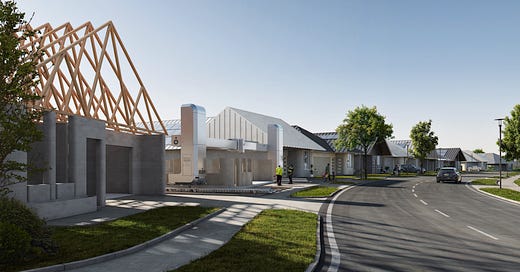



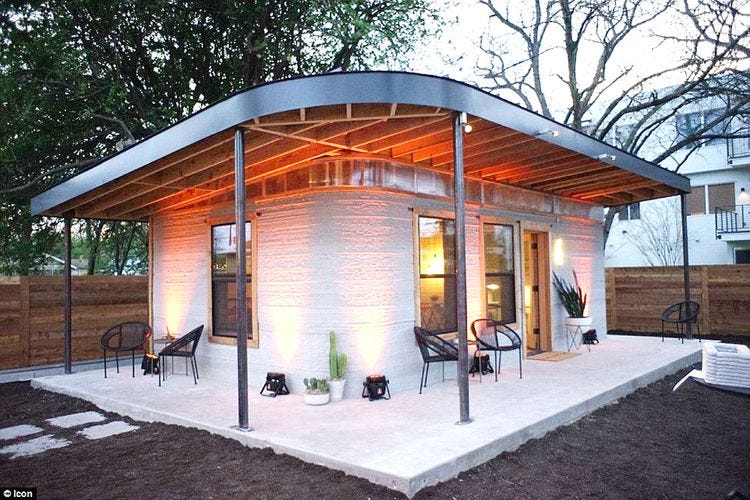
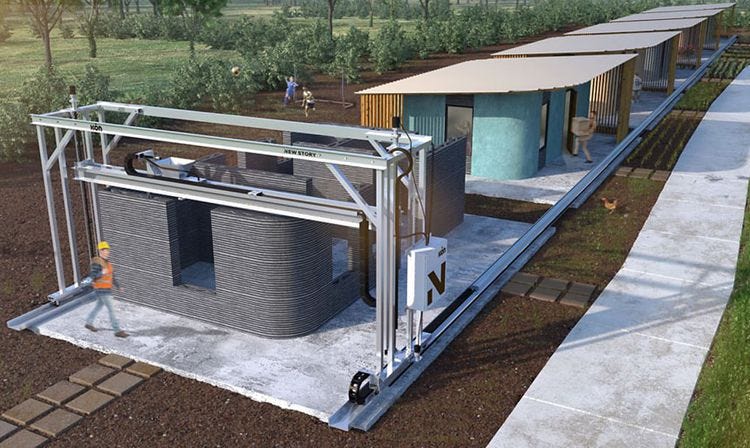

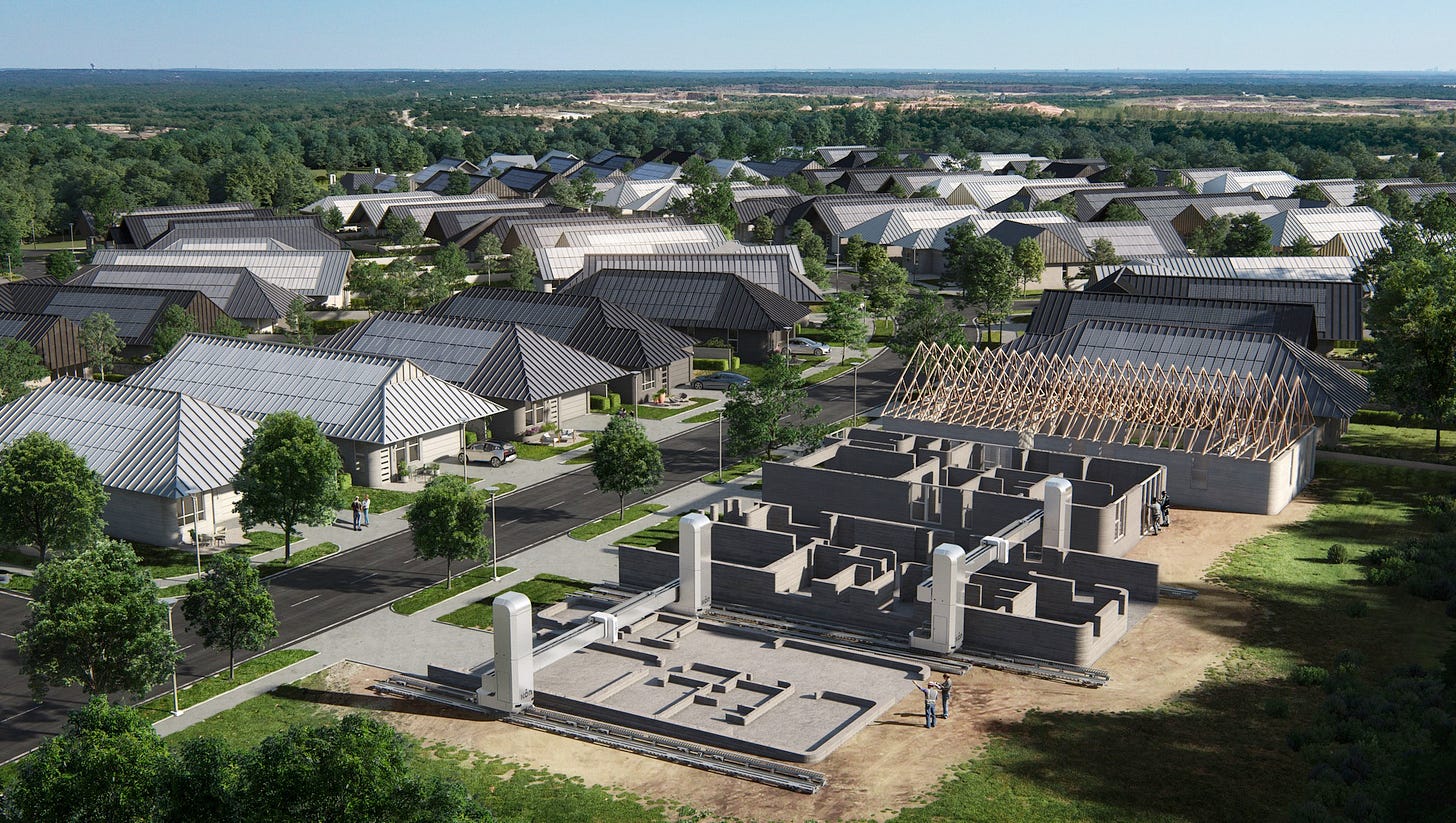

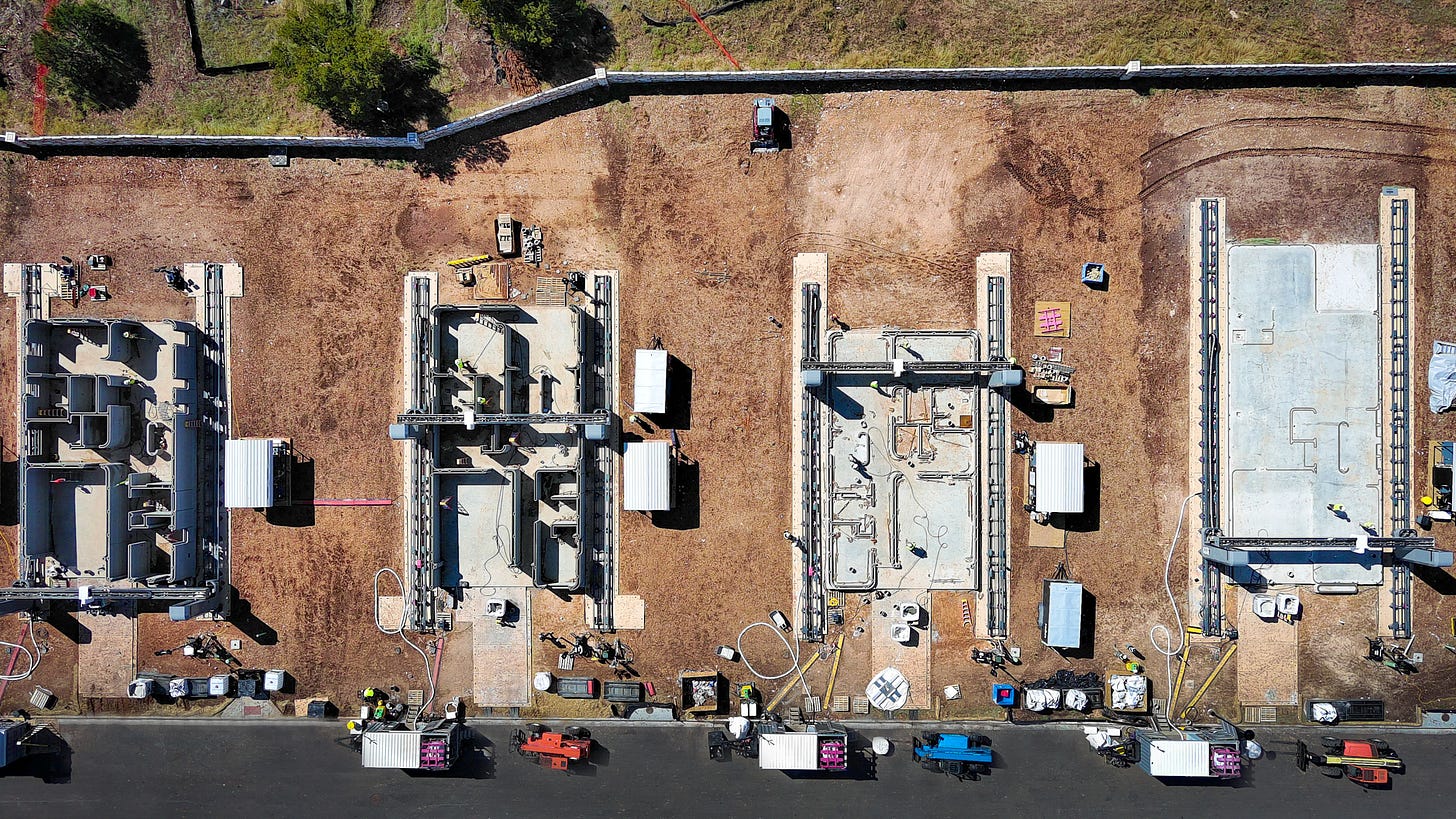



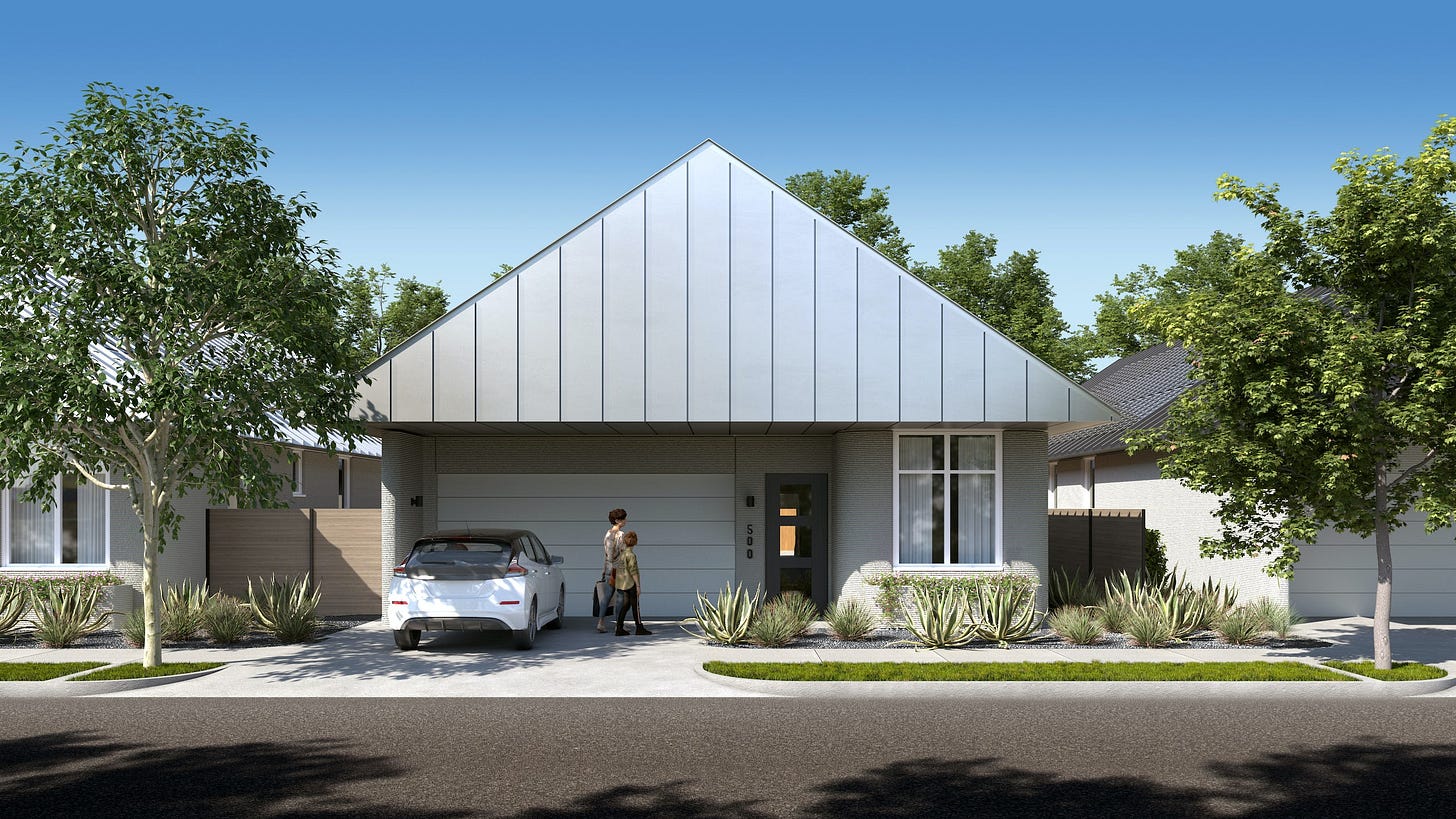
I know this is an old post but while surfing, I came across this and instantly thought of it: https://newatlas.com/architecture/grange-close-3d-printed-housing-ireland/
"Affordable housing project was 3D printed in just 12 days
Named Grange Close, the three-unit terraced social housing project is located in Louth, eastern Ireland, and created by HTL.tech. It measures 330 sq m (3,550 sq ft), which is divided into three separate homes with a floorspace of 110 sq m (1,184 sq ft) each, over two floors.
The development was completed in just 12 working days, from the initial site preparation to the handover of keys to the client, a local council which will finish furnishing the homes and rent them to social housing tenants at an affordable price. According to COBOD, which provided the 3D printer unit, this build time represents a 35% reduction in build time compared to typical build times of similar homes...."
Technology marches on!
Great points. It's hard to beat old fashioned wood framing. In his book The Very Efficient Carpenter Larry Haun talked about working with his brother and framing one small house every day. This was right after WWII and before nail guns!